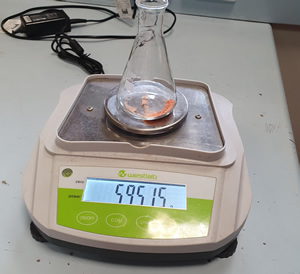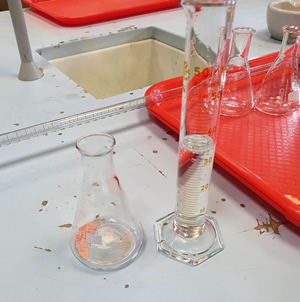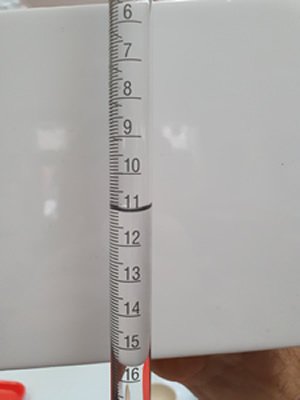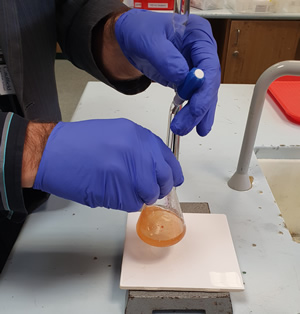Vitamin C investigation (volumetric analysis)
Concentration (%m/m) of vit-C in the commercial tablets.
Consider the bottle of vitamin-C tablets shown on the right.
Using a 0.100 M NaOH standardised solution, what is the theoretical value of the average titre expected for the titration of one tablet? The balanced chemical equation for the reaction between ascorbic acid (vit-C) and NaOH is shown below.
C6H8O6(aq) + NaOH(aq) --> NaC6H7O6(aq) + H2O(l)
Solution

Equipment
- 3 X 200 mL conical flasks
- mortar and pestle
- phenolphthalein
- Brand of Vit-C tablets
- Stock solution of 0.100M NaOH
- electronic balance
- Burette (50mL)
- funnel
- retort stand
- white tile
- distilled water





Step 7 Take the final reading from the burette and record the result in table 2.
Step 8 Repeat steps 1-7 twice more.

1. Calculate the mass of vit-C (molar mass 176 g/mol) for each trial . Record, the result in table 3.
2. Calculate the concentration (%m/m) of vit-C (molar mass 176 g/mol) for each trial . Record, the result in table 4 .
3. Are the results repeatable and reproducible? Explain.
4. Are the results reliable? Explain
5. View the label shown on the right from the container of the brand of Vitamin-C tablet. What can you say about the validity of the results? Solution

Questions you may wish to investigate.
1. Do all fresh citrus fruit have the same %(m/m) of ascorbic acid (vitamin-C)?
2. How does boiling vegetable impact on the vitamin-C content of the food?
3. Does heat destroy vitamin-C?
4. How does the content of a cheap generic brand of orange juice compare with a similar well known Brand?
5. When cooking vegetables which method is better in preserving vitamins, steaming or boiling?